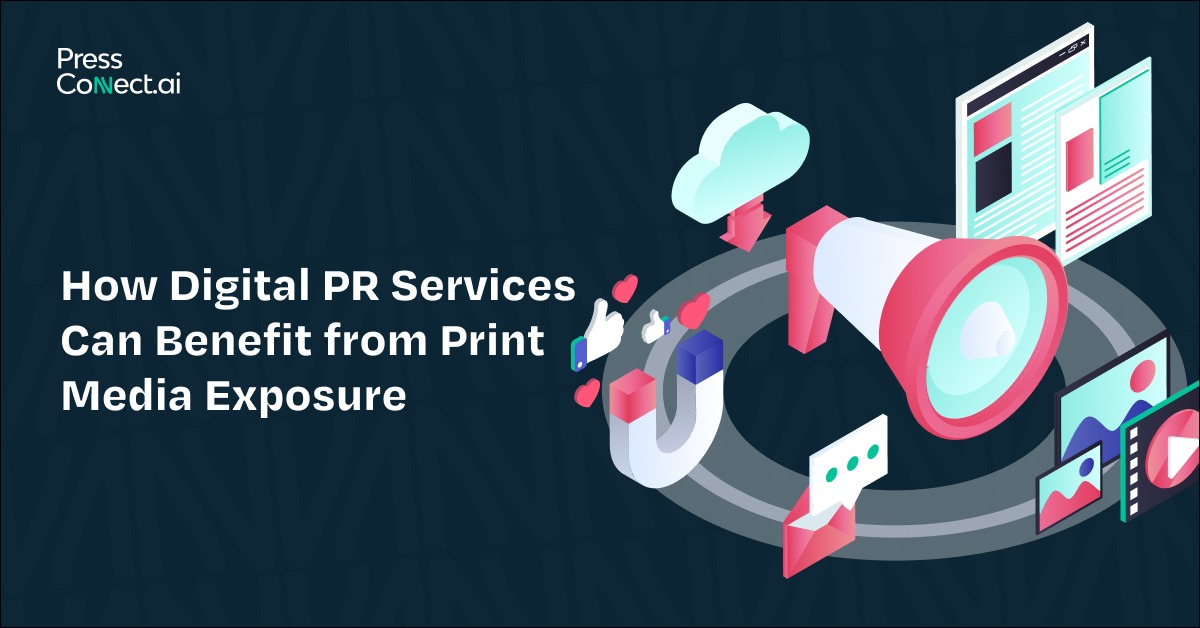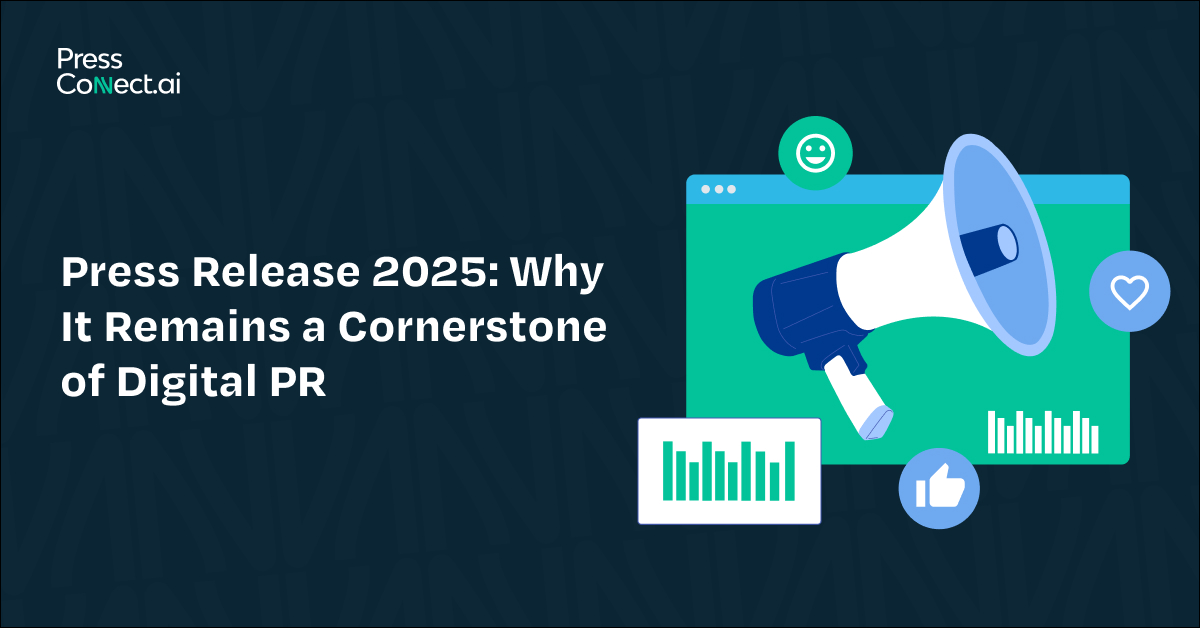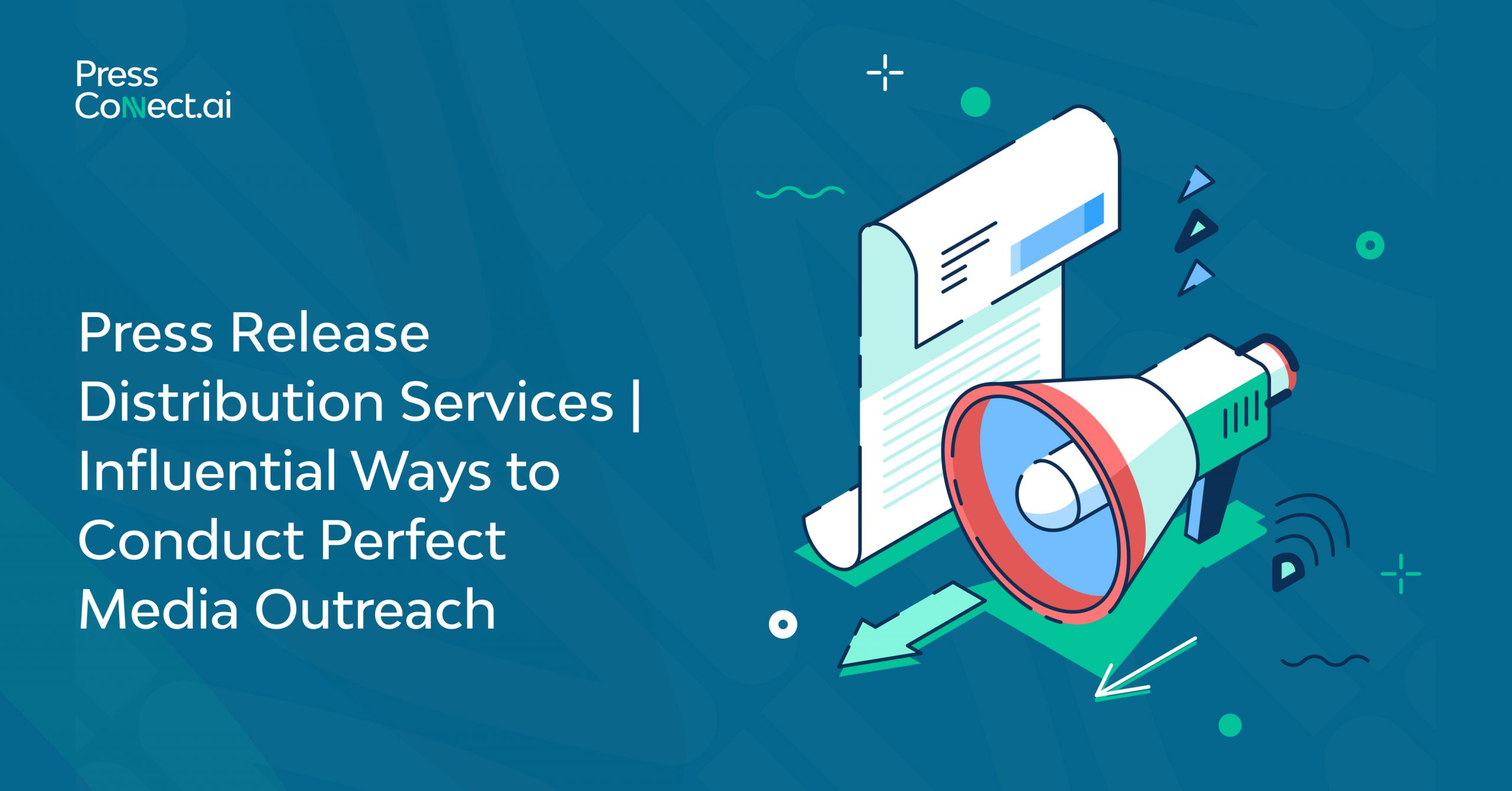How Digital PR Services Can Benefit from Print Media Exposure
In today’s world, many businesses focus on digital marketing. However, print media still holds value. Combining digital PR services with print media can lead to great results. Print media offers trust and credibility, while digital PR provides speed and insights. By using both, brands can create a well-rounded marketing strategy.
Let’s examine how these two fields can collaborate to maintain brand visibility and connect with customers.
The Enduring Influence of Print Media
94% of tech industry executives consider innovation partnerships a necessary strategy. Despite the proliferation of digital platforms, print media still significantly influences specific markets. Newspapers, magazines, and trade journals often carry a level of credibility and trust that digital platforms are still striving to achieve. For audiences that prefer tangible information sources, print media offers:
- Credibility and Trust: Print publications are often seen as more reliable because they go through strict editorial processes.
- Targeted Audience Reach: Specialized publications can assist brands in targeting specific demographics.
- Longevity: Unlike digital posts, which can be fleeting, print materials are often kept and revisited.
Bridging the Gap between Print Media and Digital PR
According to the State of Local News 2023 Report by Northwestern University, more than half of US citizens have little to no access to reliable local news sources. Digital PR services excel at creating shareable content, building backlinks, and driving traffic. However, incorporating print media into a digital strategy allows brands to tap into offline credibility while amplifying their reach online. Here is how the two can complement each other:
1. Enhanced Storytelling
Print media tells more profound stories that help brands connect with readers. When these stories are shared online, they reach a larger audience. This keeps both print and digital readers engaged.
2. Boosting SEO Through Backlinks
Many print publications also have online versions. Securing a feature in a respected magazine or newspaper boosts offline credibility and often includes backlinks in digital editions, enhancing a brand’s SEO.
3. Social Proof
Being featured in a reputable print outlet provides strong social proof. Sharing this exposure on digital channels such as websites, social media, and email campaigns further enhances brand reputation.
4. Localized Engagement
Print media is an effective way to connect with local audiences. Coupling this with targeted digital PR efforts creates a dual approach, capturing offline and online attention.
Key Strategies to Blend Digital PR and Print Media
Integrating print media exposure into a digital PR strategy requires thoughtful planning. Here are actionable strategies to create this blend:
1. Develop Press-Worthy Stories
To capture the attention of print media, brands must focus on creating compelling stories. Human interest angles, innovative solutions, or significant milestones are more likely to catch the eye of print editors.
2. Leverage Media Relationships
Building relationships with both digital and print journalists is essential. A strong rapport increases the chances of your story being featured online or offline.
3. Cross-Promote Content
Repurpose print media features for digital platforms. You can share a magazine feature as a blog post, an email, or a short video for social media.
4. Monitor and Measure the Impact
Use analytics tools to track how print media exposure affects your digital traffic, lead generation, and brand engagement. This helps you improve your strategy based on data.
Real-World Applications of Integrated Media Strategies
Example 1: A Boutique Fashion Brand
A boutique fashion brand secured a feature in a high-end lifestyle magazine. The article highlighted the brand’s sustainable practices. This feature was repurposed as a blog post and shared on social media, generating significant website traffic and increased sales.
Example 2: A Tech Startup
A tech startup utilized print media to announce a groundbreaking product launch. The coverage in a leading tech magazine provided credibility and drove traffic to their website through the publication’s online version. The resulting SEO boost helped the startup rank higher for relevant keywords.
Example 3: A Local Restaurant Chain
A regional restaurant chain leveraged print media by securing a spot in a popular food magazine. This coverage highlighted the chain’s unique menu offerings. The restaurant used QR codes in the print feature, directing readers to their website for reservations, leading to a 25% increase in bookings.
Future Trends: Where Print Media and Digital PR are Heading
As technology continues to evolve, the integration of print media and digital PR is expected to deepen. Some of the upcoming trends include:
- Interactive Print Media: QR codes and augmented reality in print publications will help readers easily access digital content.
- Data-Driven Personalization: Combining digital analytics with print PR distribution data will allow brands to target specific audience segments effectively.
- Sustainability in Print: Eco-friendly print materials and processes will appeal to environmentally conscious consumers.
- Hybrid Events: Brands will increasingly use print media to promote hybrid events that combine physical and virtual elements, extending their reach.
The Challenges and How to Overcome Them
While integrating print media with digital PR is promising, it does come with challenges:
- Cost Factor: Print media features can be expensive. To mitigate this, brands should focus on targeted publications that align with their audience.
- Time-Intensive Process: Securing a spot in print media often takes longer. Planning well in advance and aligning timelines is crucial.
- Measuring ROI: Print media doesn’t offer immediate analytics unlike digital platforms. Combining print efforts with digital tracking tools helps bridge this gap.
Why Brands Should Not Ignore Print Media
The distinctive characteristics of print media make it highly effective in the marketing mix. While using the Internet is fast and interactive, using prints is formal and concentrates on the key message. Altogether, she develops an effective integrated communication plan that targets multiple trivial publics identified in this paper.
Print media also offers the most effective way of relating emotionally with the audience, as no other media can. This is especially so given that read print appeals to multiple sensory organs by offering high-quality paper touch, sound, and color. Third, print media’s permanency allows the message to be retrieved easily in the future, unlike when the content is buried or deleted from the source.
Companies that use print media can also create images about exclusivity and prestige. When a quick brand or a trade name is mentioned in an expensive purchase magazine or a trade journal of repute, it gives a certain prestige. In addition, print media sometimes respond better to some groups, such as older people or business people who still believe in conventional media.
By incorporating print media into the marketing communication mix, not only is there support for the company’s branding message, but it is also a way to differentiate itself from the numerous digital competitors. For brands, this means having a way to appeal to that instinct and get that first-digital-come-NASDAQ-message-out at the same time as they have a way of getting a permanent record-share printed.
Conclusion: How Press Connect Can Help with This
Collaborating with an experienced digital PR agency like Press Connect can simplify the integration of print media exposure into your digital strategy. From constructing compelling press releases to building relationships with print and digital journalists, Press Connect ensures your brand’s story is told across multiple platforms. Their expertise in SEO, analytics, and media outreach helps brands use the best of both worlds as it drives visibility and credibility seamlessly.






